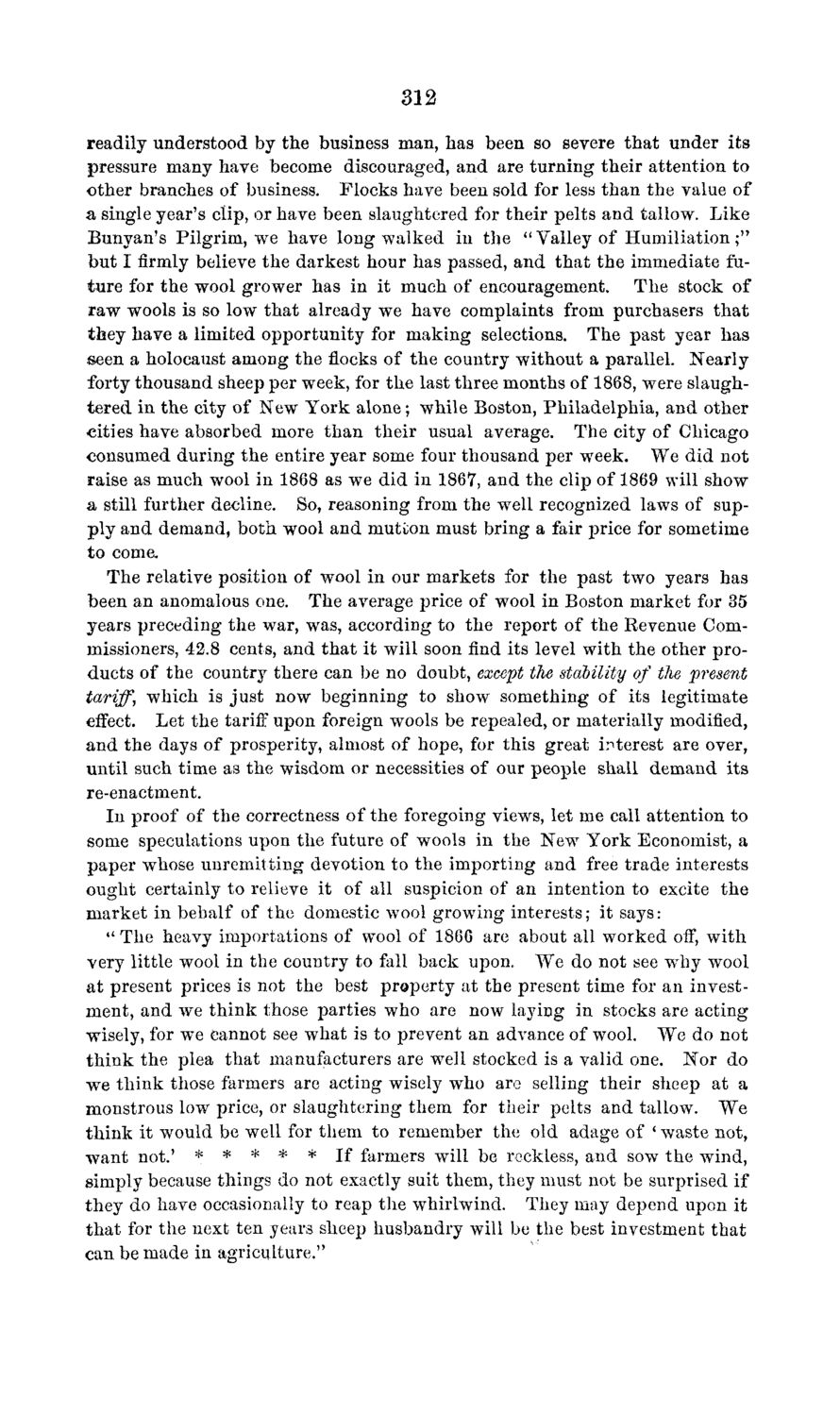| |
| |
Caption: Board of Trustees Minutes - 1869
This is a reduced-resolution page image for fast online browsing.

EXTRACTED TEXT FROM PAGE:
312 readily understood by the business man, has been so severe that under its pressure many have become discouraged, and are turning their attention to other branches of business. Flocks have been sold for less than the value of a single year's clip, or have been slaughtered for their pelts and tallow. Like Bunyan's Pilgrim, we have long walked in the "Valley of H u m i l i a t i o n ; " b u t I firmly believe the darkest hour has passed, and t h a t the immediate fut u r e for the wool grower has in it much of encouragement. T h e stock of raw wools is so low that already we have complaints from purchasers t h a t they have a limited opportunity for making selections. The past year has seen a holocaust among the flocks of the country without a parallel. Nearly forty thousand sheep per week, for t h e last three months of 1868, were slaughtered in the city of New Y o r k alone; while Boston, Philadelphia, and other cities have absorbed more than their usual average. The city of Chicago consumed during the entire year some four thousand per week. We did not raise as much wool in 1868 as we did in 1867, and the clip of 1869 will show a still further decline. So, reasoning from the well recognized laws of supply and demand, both wool and mutton must bring a fair price for sometime to come. The relative position of wool in our markets for the past two years has been an anomalous one. The average price of wool in Boston market for 35 years preceding the war, was, according to the report of the Revenue Commissioners, 42.8 cents, and t h a t it will soon find its level with the other products of the country there can be no doubt, except the stability of the present tariff, which is j u s t now beginning to show something of its legitimate effect. Let the tariff upon foreign wools be repealed, or materially modified, and the days of prosperity, almost of hope, for this great interest are over, until such time as the wisdom or necessities of our people shall demand its re-enactment. In proof of the correctness of the foregoing views, let me call attention to some speculations upon the future of wools in the New York Economist, a paper whose unremitting devotion to the importing and free trade interests ought certainly to relieve it of all suspicion of an intention to excite the market in behalf of the domestic wool growing interests; it says: " The heavy importations of wool of 1866 are about all worked off, with very little wool in the country to fall back upon. We do not see why wool at present prices is not the best property at the present time for an investment, and we t h i n k those parties who are now laying in stocks are acting wisely, for we cannot see what is to prevent an advance of wool. We do not t h i n k the plea that manufacturers are well stocked is a valid one. Nor do we t h i n k those farmers are acting wisely who are selling their sheep at a monstrous low price, or slaughtering them for their pelts and tallow. We t h i n k it would be well for them to remember the old adage of * waste not, want not.' * * * * * If farmers will be reckless, and sow t h e wind, simply because things do not exactly suit them, they must not be surprised if they do have occasionally to reap the whirlwind. They may depend upon it t h a t for the next ten years sheep husbandry will be the best investment t h a t can be made in agriculture."
| |